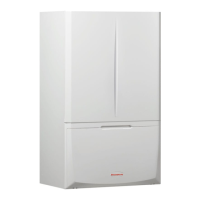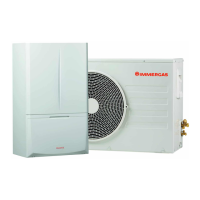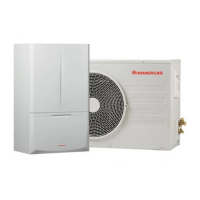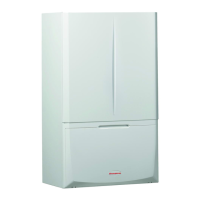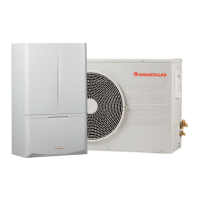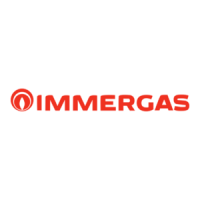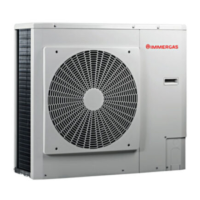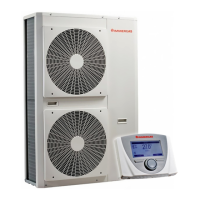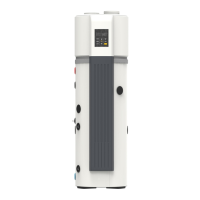Do you have a question about the Immergas MAGIS COMBO and is the answer not in the manual?
Provides guidance on optimal placement, structural requirements, and safety for indoor unit installation.
Details the unit's antifreeze functions, minimum temperatures, and protection measures against freezing.
Outlines requirements for system cleaning, water treatment, and connections for safe and efficient operation.
Details electrical connection procedures, safety requirements, and wiring guidelines for the indoor unit.
Describes the use of the external temperature probe for system regulation and its connection.
Provides data on resistance factors and equivalent lengths for various flue components.
Details Type B installation requirements for indoor units, including placement and ventilation.
Discusses flue exhaust connections to flues, chimneys, and specific appliance types.
Provides instructions for filling the heating system, checking pressure, and enabling venting functions.
Explains how to fill the condensate drain trap to prevent flue gas passage.
Outlines steps for safe gas system commissioning, including ventilation and safety checks.
Presents graphical representations of operating limits for heat pump mode.
Lists available kits, such as 2-zone kits, relay boards, and R410A circuit connection kits.
Emphasizes regular cleaning and yearly maintenance for unit integrity, safety, and performance.
Provides crucial safety warnings regarding appliance usage, electrical safety, and environmental exposure.
Details the control panel layout, buttons, and their respective functions for unit operation.
Presents detailed parameters and their descriptions for system configuration and monitoring.
Details how to check and restore central heating system pressure to ensure proper operation.
Explains the procedure for draining the indoor unit, including valve operations.
Describes the unit's antifreeze functions, protection mechanisms, and recommendations for cold climates.
Provides guidance on cleaning the indoor unit casing using appropriate methods and materials.
Outlines procedures for permanent shutdown and decommissioning of the indoor unit by professionals.
Presents a detailed hydraulic diagram of the indoor unit, identifying all components and connections.
Provides troubleshooting steps for common issues like gas smell, ignition blocks, combustion problems, and noise.
Outlines the process and requirements for converting the heat generator to different gas types.
Details the procedure for calibrating fan revolutions, essential for gas conversion and flue system adjustments.
Explains how to adjust the air-gas ratio for optimal combustion by calibrating CO₂ levels.
Describes the function that periodically activates the pump to prevent it from blocking due to inactivity.
Details the function that prevents the 3-way valve from locking up due to prolonged inactivity.
Explains the function that activates the appliance to prevent freezing in radiators.
Covers the solar function, its interaction with outdoor temperature, and DHW settings.
Explains how to disable the outdoor unit via a closed contact.
Describes the preheating function that ensures water reaches a minimum temperature before heating.
Details the automatic vent function for deaerating the system, including activation methods.
Describes the screed heater function for thermal shock on new radiant panel systems.
Covers the solar panels coupling function, including probe kits and operating optimization.
Explains dehumidification performed via humidistat or humidity sensor.
Details the test mode function for using specific functions like pump down.
Lists essential annual checks and maintenance tasks for the appliance to ensure safety and performance.
Lists key combustion parameters, including gas nozzle diameter, venturi details, and CO₂/NOx values.
Provides guidance on optimal placement, structural requirements, and safety for indoor unit installation.
Details the unit's antifreeze functions, minimum temperatures, and protection measures against freezing.
Outlines requirements for system cleaning, water treatment, and connections for safe and efficient operation.
Details electrical connection procedures, safety requirements, and wiring guidelines for the indoor unit.
Describes the use of the external temperature probe for system regulation and its connection.
Provides data on resistance factors and equivalent lengths for various flue components.
Details Type B installation requirements for indoor units, including placement and ventilation.
Discusses flue exhaust connections to flues, chimneys, and specific appliance types.
Provides instructions for filling the heating system, checking pressure, and enabling venting functions.
Explains how to fill the condensate drain trap to prevent flue gas passage.
Outlines steps for safe gas system commissioning, including ventilation and safety checks.
Presents graphical representations of operating limits for heat pump mode.
Lists available kits, such as 2-zone kits, relay boards, and R410A circuit connection kits.
Emphasizes regular cleaning and yearly maintenance for unit integrity, safety, and performance.
Provides crucial safety warnings regarding appliance usage, electrical safety, and environmental exposure.
Details the control panel layout, buttons, and their respective functions for unit operation.
Presents detailed parameters and their descriptions for system configuration and monitoring.
Details how to check and restore central heating system pressure to ensure proper operation.
Explains the procedure for draining the indoor unit, including valve operations.
Describes the unit's antifreeze functions, protection mechanisms, and recommendations for cold climates.
Provides guidance on cleaning the indoor unit casing using appropriate methods and materials.
Outlines procedures for permanent shutdown and decommissioning of the indoor unit by professionals.
Presents a detailed hydraulic diagram of the indoor unit, identifying all components and connections.
Provides troubleshooting steps for common issues like gas smell, ignition blocks, combustion problems, and noise.
Outlines the process and requirements for converting the heat generator to different gas types.
Details the procedure for calibrating fan revolutions, essential for gas conversion and flue system adjustments.
Explains how to adjust the air-gas ratio for optimal combustion by calibrating CO₂ levels.
Describes the function that periodically activates the pump to prevent it from blocking due to inactivity.
Details the function that prevents the 3-way valve from locking up due to prolonged inactivity.
Explains the function that activates the appliance to prevent freezing in radiators.
Covers the solar function, its interaction with outdoor temperature, and DHW settings.
Explains how to disable the outdoor unit via a closed contact.
Describes the preheating function that ensures water reaches a minimum temperature before heating.
Details the automatic vent function for deaerating the system, including activation methods.
Describes the screed heater function for thermal shock on new radiant panel systems.
Covers the solar panels coupling function, including probe kits and operating optimization.
Explains dehumidification performed via humidistat or humidity sensor.
Details the test mode function for using specific functions like pump down.
Lists essential annual checks and maintenance tasks for the appliance to ensure safety and performance.
Lists key combustion parameters, including gas nozzle diameter, venturi details, and CO₂/NOx values.
